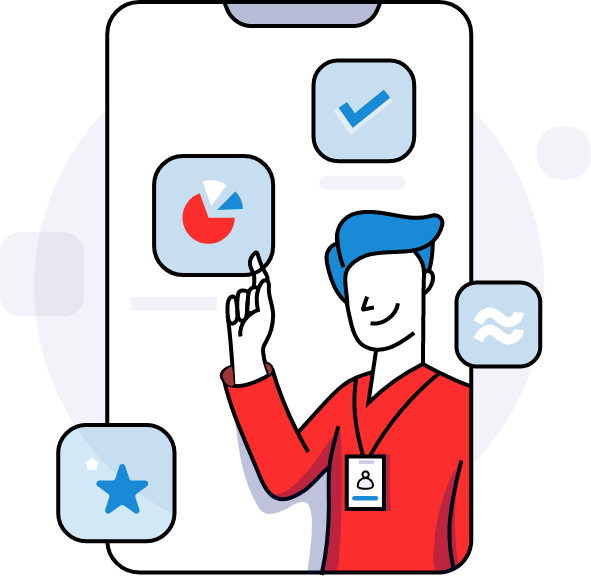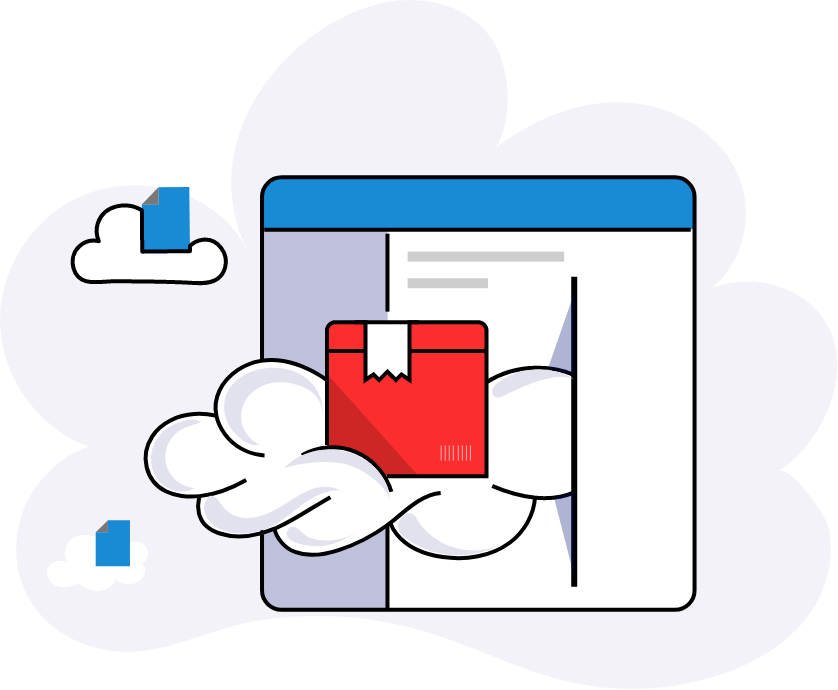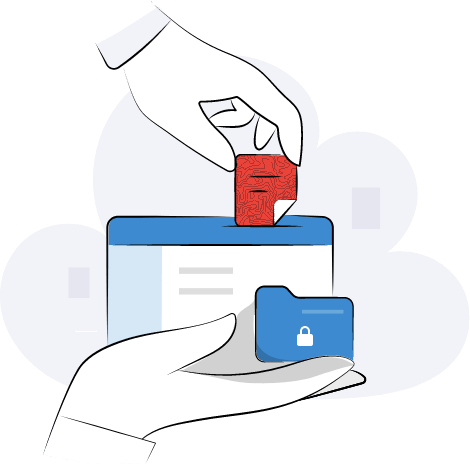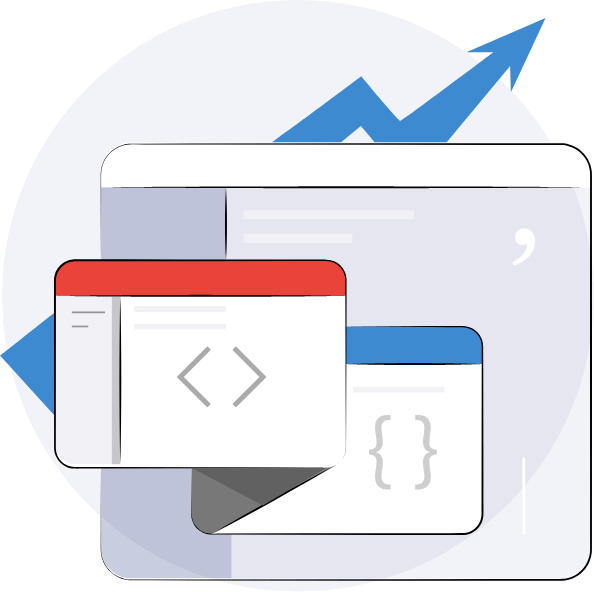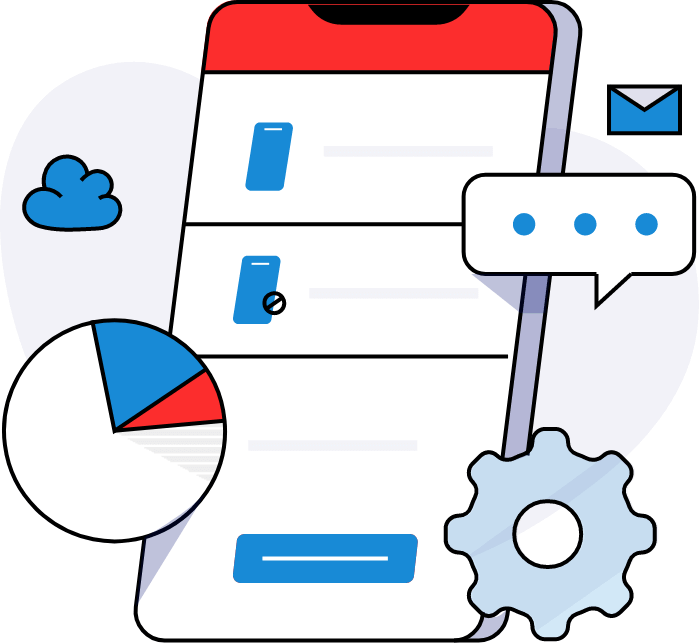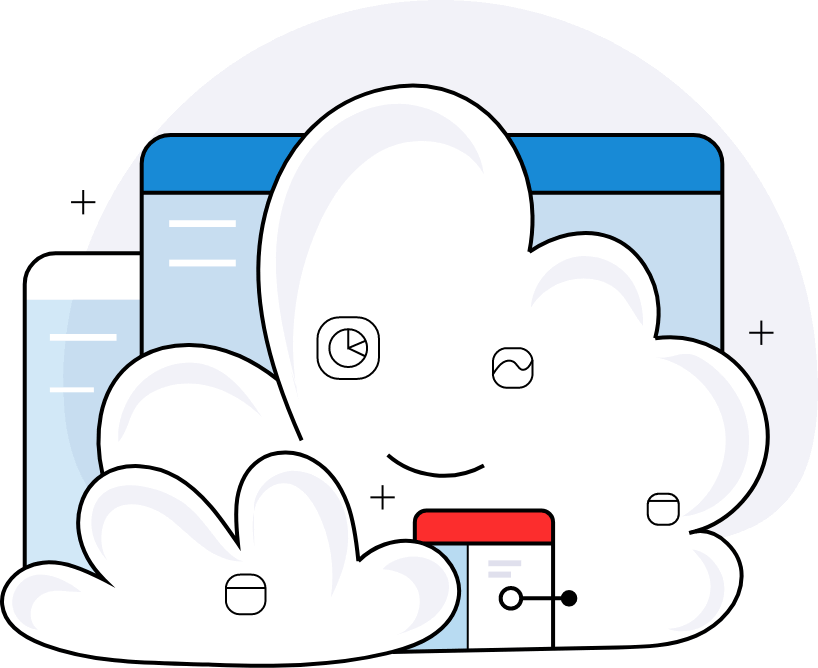Low-code is not the future,it's the present
Low-code app development has been touted as the next big thing for a few years now, but it looks like its time has finally arrived. The popularity of low-code development platforms is skyrocketing. According to a recent report from Forrester, the global market for low-code development platforms will grow from $6.8 billion in 2019 to $21.2 billion by 2024, at a compound annual growth rate (CAGR) of 26%.
In the current economic situation, businesses are looking for ways to optimize their processes and cut costs. Low-code development platforms provide a way to do this by allowing companies to develop applications without the need for expensive and time-consuming coding. This means businesses can develop applications quickly and affordably, which can help them improve their bottom line. In addition, low-code development platforms can help businesses automate their processes, which can further reduce costs.
A few years back, a business enterprise could be forgiven if going digital was not the highest priority on their list—digital transformation was seen as more of a luxury than a need. However, times have changed, and fast! In this study, we explore how low-code application development is playing a central role in this dramatic shift in priorities.
In order to study the breadth of the need for digital transformation, its adoption trends, and the extent to which low-code is helping democratize the application development process, we surveyed 800+ IT and business leaders from various industries and regions.
This report captures and analyzes the insights from our survey, and we hope it helps you make better digital transformation decisions for your own business.
The status quo, the speed breakers, and digitalization aspirations
While many of us agree that digital transformation is the best way forward for businesses, we also have to be cognizant of the fact that there are numerous challenges to overcome to reach this goal.One of our intentions with this report was to identify the current state of affairs, perceived challenges, and key areas of focus for organizations that are on their digital transformation journey. This section will focus on these key ideas and how industry specialists see them.
The communication gap is a challenge that's set to grow with the shift from office-based to more remote work, and there are many software service providers already catering to this space. But, from an application development platform's perspective, providing the means to communicate and collaborate inside the product itself is a trend that's slowly but surely catching up.
IT teams have their core set of development tasks, which they mostly stick to, and the fact that even these tasks are rarely achieved completely over stipulated timelines gives rise to departmental technology needs moved down the pecking order. This, and the obvious lag in the traditional app development process, are directly related. The more time the IT team spends on core tasks, the lower the priority departmental requests get. The solution here is obviously to replace traditional methods with quicker ways of app development, or democratizing the process by providing easier avenues for business users to develop their own business applications.
More than
65%of respondents say that the major IT challenge for their business is a combination of communication gaps, lack of priority for departmental needs, and slow app development process turnaround.
Organizations in their digital transformation journey across industries are focused mainly on enterprise data digitalization
43%followed by workflow automation
32%and consumer-facing apps
25%When analyzing the trends of the digital transformation process, the biggest use case for which businesses are building software is for enterprise data digitalization, with over 43% of respondents choosing it. This is to be expected, in our opinion, as enterprises are the ones that have the most to gain and lose with the digital transformation process, considering the scale of their operations and the loss in revenue due to the pandemic. Also, based on our customer interactions, we're aware that most organizations are going through a phase of internal process digitalization, and the shift in focus to consumer apps will only kick off when internal processes are digitalized.
This is followed by workflow automation, with ~32%, which is another internal-facing activity, and around 25% for consumer-facing application development.
We believe that this inward-facing application development trend will continue for a few more years to come, and then shift gradually to improving the consumer-facing apps space.
Further strengthening the belief that businesses are focused on digitally transforming their internal processes is this finding that more than 50% of IT teams focus on enterprise application development. The surprising insight here is the high level of involvement from line of business teams (over 40%) in this process. This is an indication that an increasing number of businesses are starting to realize the need to get business users to contribute their know-how, rather than solely depending on the technical expertise of IT teams. This is also an indication of the resource constraints that businesses face when it comes to their technical workforce.
Enterprise app development is the main focus for
53%IT respondents and
42%LOB respondents across companies of all scales.
Only
25%of the respondents claimed that their businesses were building more than
10apps every month
Even though there's an immense push for digital transformation, there's also a question about the pace at which it's progressing. Previous insights showed us that the focus is in the right direction, but this piece of information indicates the pace at which things are progressing.
There are a couple of obvious reasons which we feel are causing this slowness in output. One is the adaptation of businesses to the pandemic, and the other is the current financial restrictions on investing too heavily in technology. We predict that this will change in the next few years, with businesses opening up and revenue streams replenishing.
Low-code, and the need for speed
From the insights we discussed above, it seems that technology is needed to increase the speed of development, democratization of the application development process, and collaboration. Let’s dive deeper into how the industry perceives low-code platforms.
The general trend in the industry, with regards to the familiarity with low-code platforms, is somewhat expected, considering that IT respondents keep abreast of up-and-coming technologies, and LOB users tend to catch up on it soon after. This is evident, with 59% of IT respondents saying they're proficient with at least one low-code platform, pointing at the increasing trend of more and more organizations looking at these platforms for their digital transformation needs.
Another point to be cognizant of is that IT teams are still the decision makers when it comes to technology buys, and this trend could be limiting business users from venturing into finding solutions that help them. Our take on this is that this number will see a large increase even among LOB users in the next 2-3 years, as the technology becomes more commonly used in organizations.
of IT respondents answered that they were proficient with low-code platforms, compared to just
29%of LOB participants. Also,
57%of LOB respondents have never used low-code platforms.
Nearly
50%of respondents perceive that the main benefit of low-code platforms is their ability to facilitate accelerated application development.
Fast forwarding the application development process by cutting down complexity and providing ready-made components is seen as the biggest benefit that low-code platforms offered by almost half of the audience that took the survey. This was followed by the perception that app maintenance was also low on these platforms. This is in line with how these platforms have been designed, and the value of it is apparently evident to users, as shown by these responses.
We did some further digging into the perceived benefits of low-code platforms by splitting the IT and LOB respondent base to see if there were any deviations based on job functions. We wanted to see if IT users, who seem to be more adept at these platforms, were skewing the data in favor of the speed of development benefit. But to our surprise, even with the low percentage of proficiency on low-code platform, the LOB respondents also felt that accelerating the app development process is the main benefit.
At a functional level, around
50%of both IT and LOB respondents also believe the ability to speed up the app development process is the primary benefit of low-code platforms.
of all respondents expressed that the extent of the abstraction of a low-code platform is what appeals most to them.
The above percentage cements the belief that moving into a more abstracted/no-code development ecosystem is something that most users are looking for. Considering that this capability helps immensely when taking care of democratizing the app development process, this comes as no surprise. IT are looking at avenues to pass on the non-critical app requirements of LOB users back to them—and the availability of an increasing number of no-code features in low-code platforms will help in shifting the power to non-developers/citizen developers. This is a win-win situation for both IT and LOB users, as IT can focus on enterprise-critical requirements while LOB users can quickly stitch up smaller apps to help their day-to-day business needs.
Strengthening our view that low-code platforms are going to be the future of application development is this insight. Almost two-thirds of respondents confirmed that their organizations are in the active evaluation stage for low-code platforms to transform their enterprises. As mentioned before, the adoption trend as per our predictions, and based on these responses, is going to be bullish in the next 2-3 years.
Approximately
60%of respondents mentioned that their organizations are planning to invest in low-code technology in the near future.
What are the features that users look for when evaluating low-code platforms?
To understand what the respondents were looking for as the main features in a low-code platform, we presented them with a set of options to choose from. What you find below is a compilation of the top 3 capabilities under each umbrella segment, as prioritized by the 800+ respondents.
-
Top development capabilities
- No-code development
- Expression-based language
- Intelligent automation
-
Top deployment capabilities
- Sandboxing
- One-click deployment
- Instant mobility
-
Top UX/personalization capabilities
- Self-service portals
- Native feature support
- Custom domains and rebranded apps
-
Top security capabilities
- Geographically isolated data centers
- Encrypted data migrations
- Robust data protection, privacy policies, and audits
-
Top maintenance capabilities
- Integrated requirement gathering
- Enterprise governance guardrails
- Built-in usage analytics, AI-based recommendations
-
Top planning/design capabilities
- Design studio
- UI personalization provisions
- Custom layouts, icons
-
Top data management capabilities
- Offline-to-online data processing
- Online data collection
- Cloud-based unified data service
-
Top collaboration capabilities
- Real-time cloud data backup
- Multi-user development
- Automated notifications, alerts, and schedulers
-
Top integration capabilities
- Custom API creation
- Extensive out-of-the-box integrations
- Legacy gateway integrations
Survey demographics
We surveyed 800+ IT and business leaders from various industries and regions to compile the information in this report. Here's an overview of the spread of respondents based on demographics, like organization size, job roles, etc.
Respondents by company revenue size
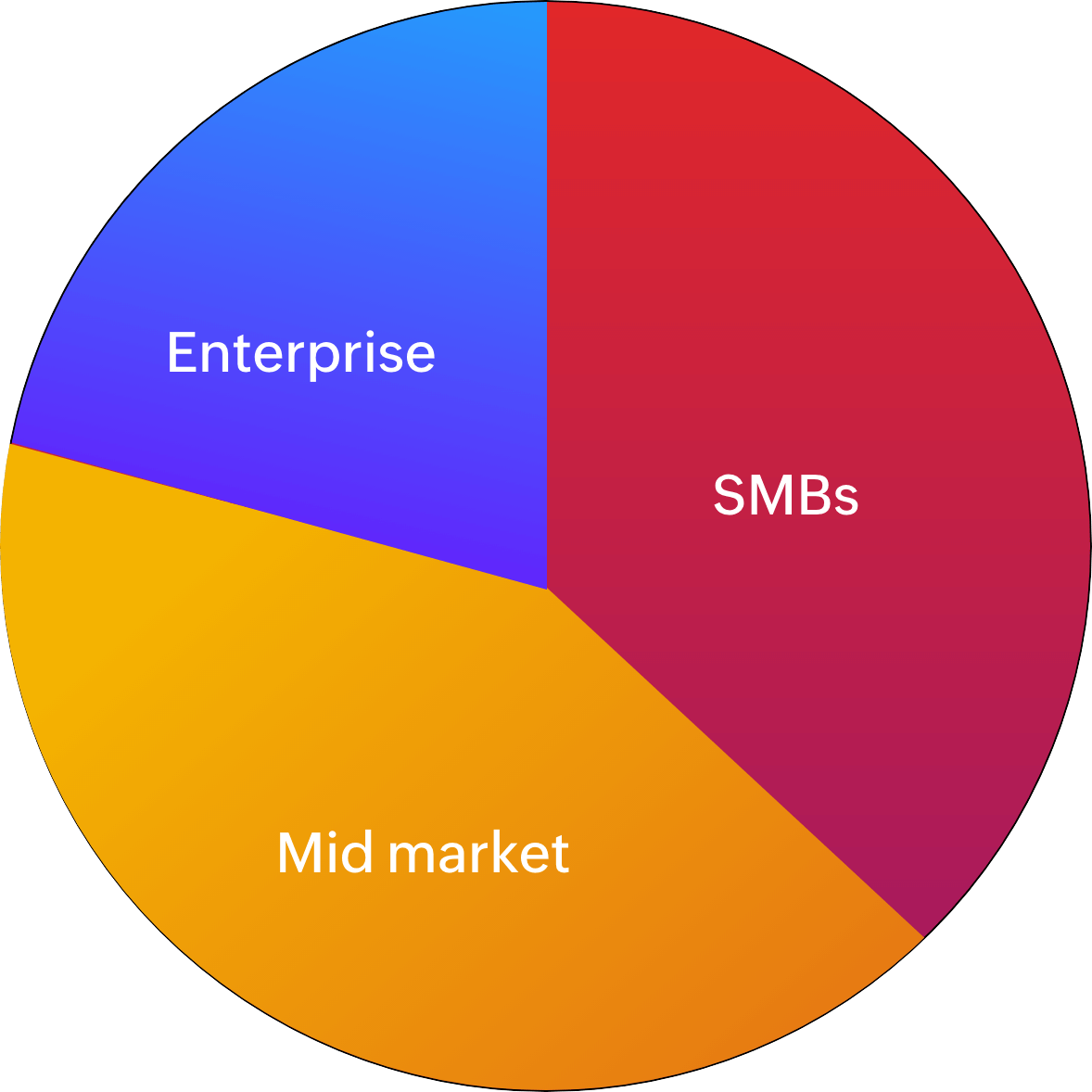
SMBs (Revenue < $500K)
40%
Mid market (Revenue between $500K & $100M)
40.2%
Enterprise (Revenue > $100M)
19.8%
Respondents by industry
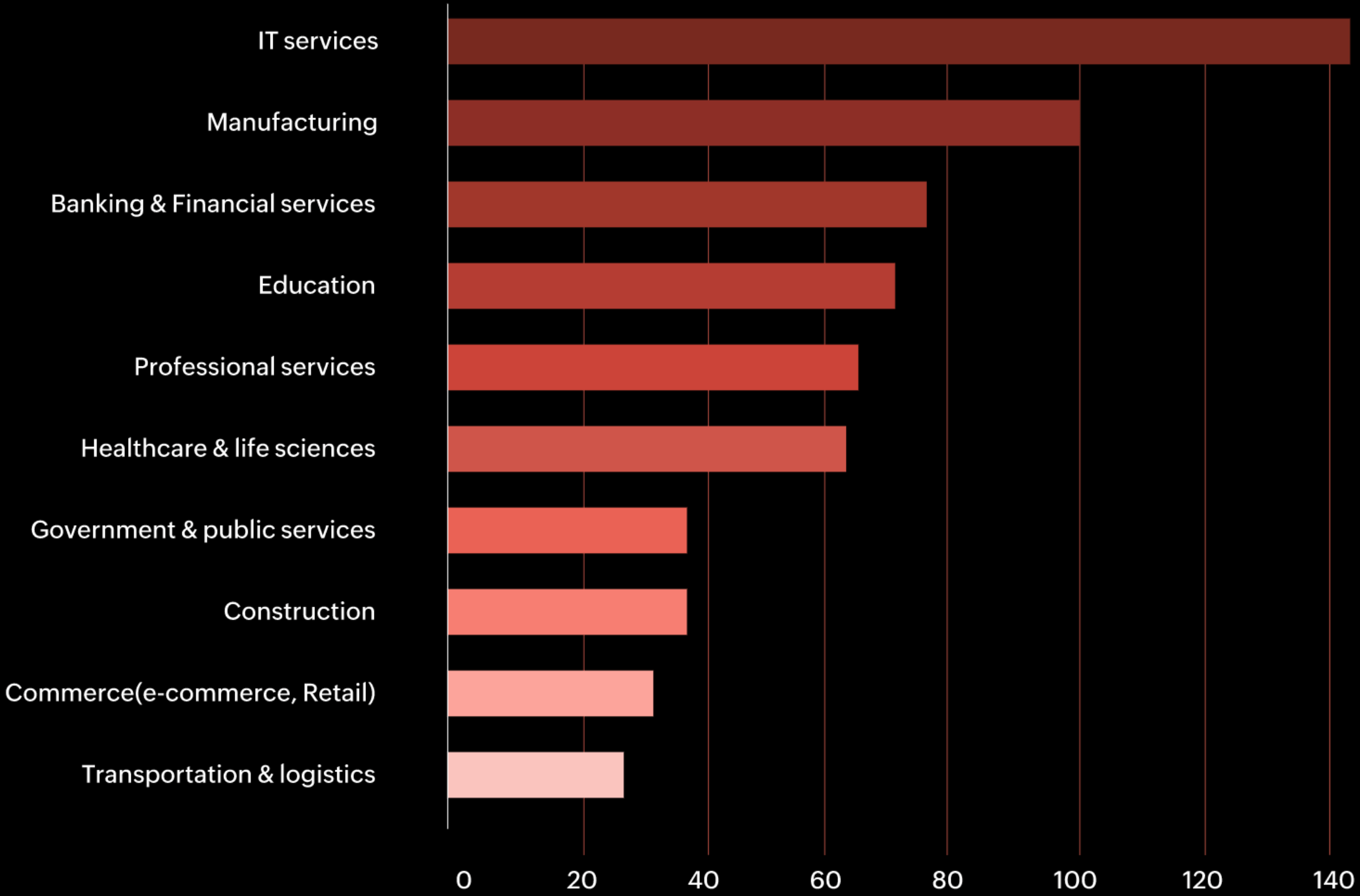
Respondents by job function
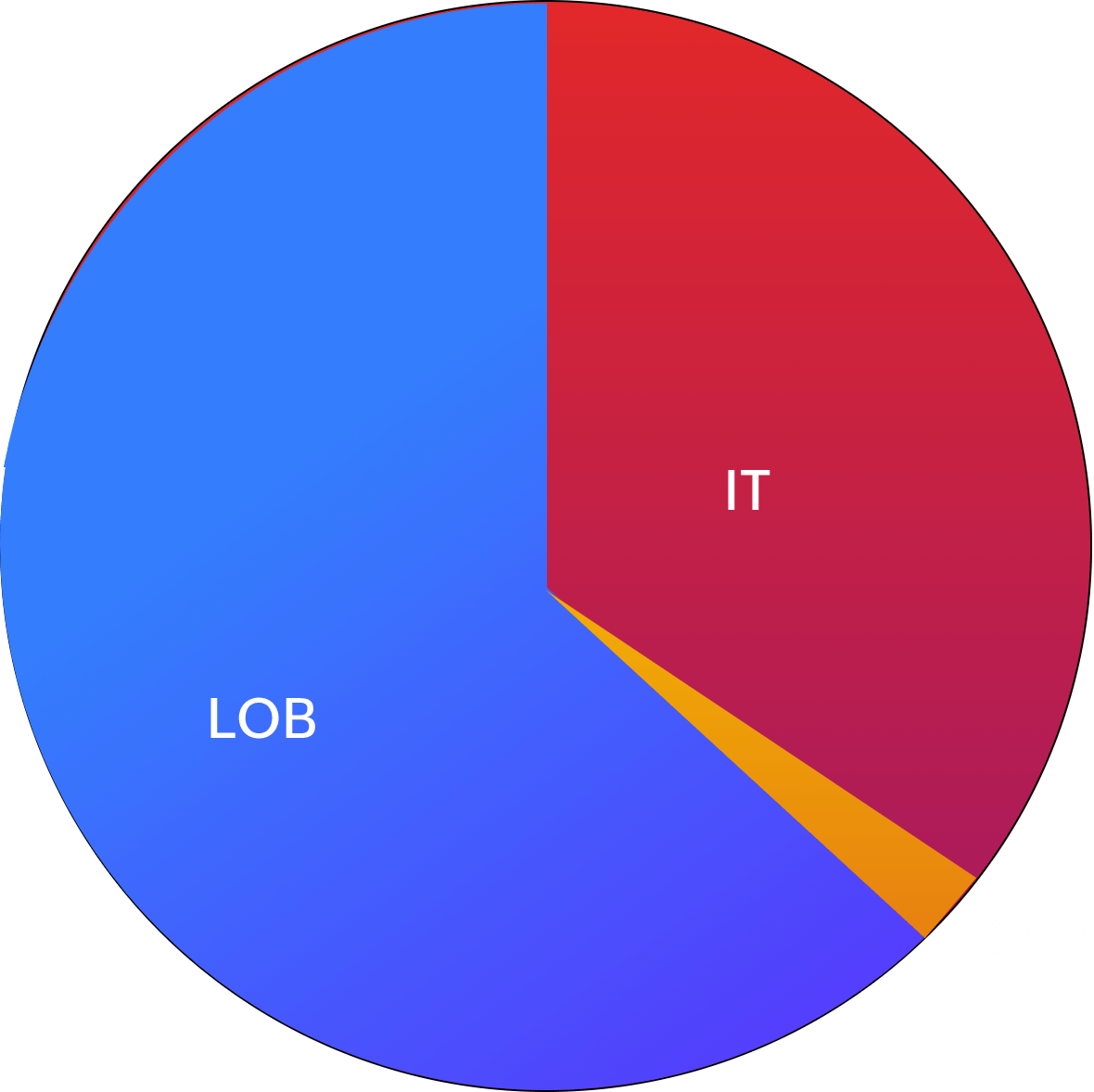
IT32.4%
LOB64.7%
Both2.9%
About us
At Zoho Creator, we study the past, observe the present, and envision the future of how software communicates with businesses. To empower business owners, we’ve infused Zoho Creator with modern functionality like low-code and rapid development. With Zoho Creator, users can cater to custom requirements, with apps that automate day-to-day tasks, and let them tackle tomorrow’s problems. Just sign up, pick a plan, and start building!
Start your digital transformation journey with Zoho Creator’s:

Easy-to-use UI for no-code/low-code development

Intelligent automation for workflow digitalization

Faster time to market using one-click deployment

Ready-made mobile apps using instant mobility features

Vendor/customer management using self-service portals

White-labeled apps for branding purposes

Robust data protection for secure operation

Granular user access controls for enterprise governance guardrails

Unlimited UI personalization provisions with HTML/ZML capabilities

Top-notch data management using our Unified Data Service

Multi-user development for better collaboration

600+ out-of-the-box connectors for seamless integrations



